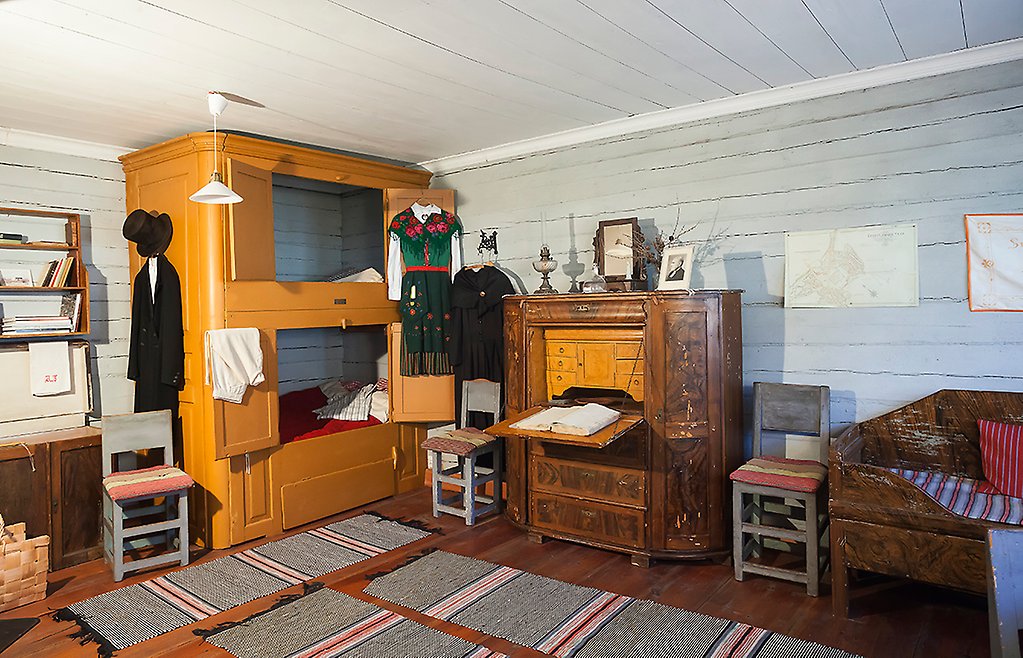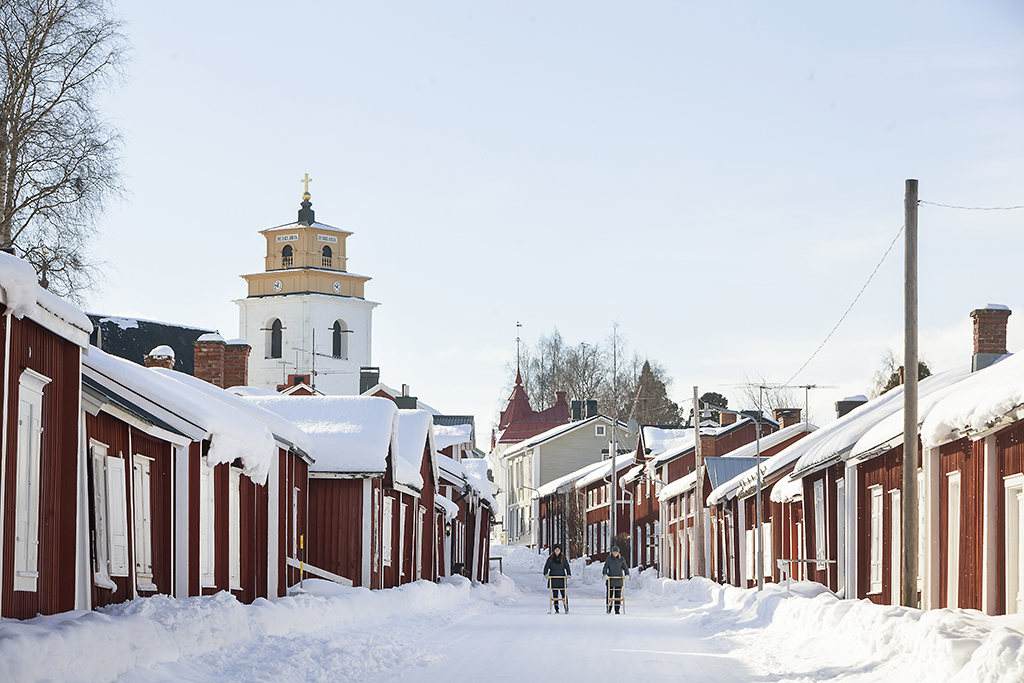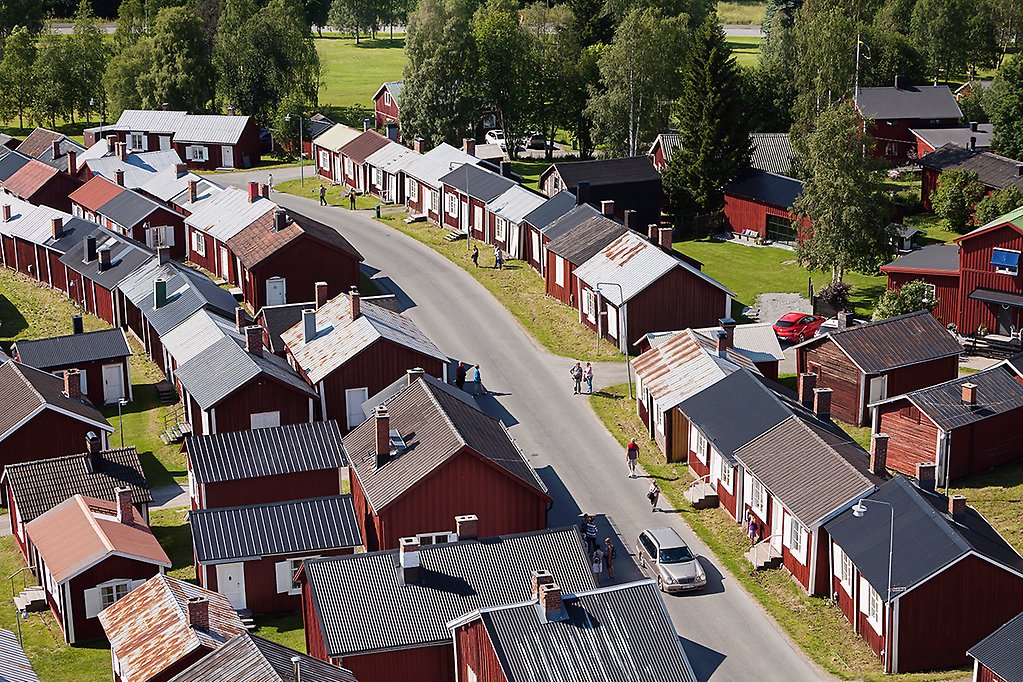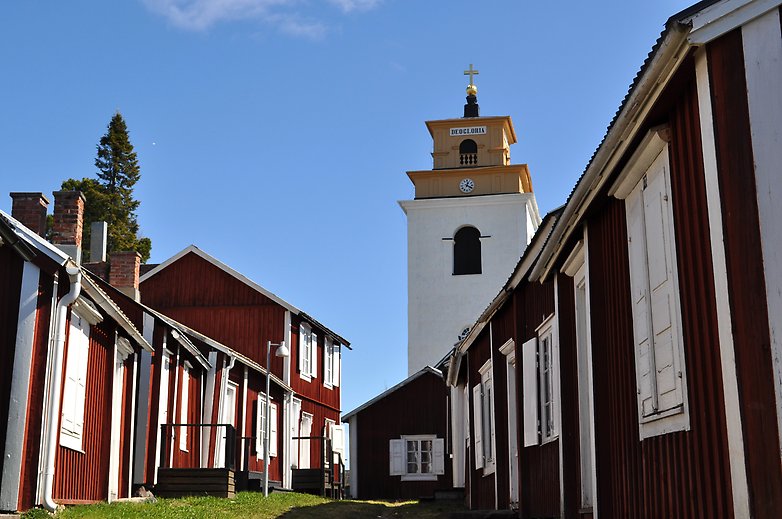Sweden once had a total of 71 church towns, today only 16 remain and most of these are ruins of what they once were. Gammelstad has the country's largest and most well-preserved church town with 404 cottages and 552 chambers.
The world heritage area includes the culturally valuable buildings, a total of 520 protected buildings, the road network, the ancient site and the centuries-old custom of staying in one's church cottage during weekends.
The history of Gammelstad Church Town
UNESCO the world heritage convention
On December 7th 1996, Gammelstad's church town was added to UNESCO's World Heritage List and became what is known as a world heritage site. UNESCO's justification reads:
"Gammelstad's church town is an excelent example of the traditional church town found in northern Scandinavia. It illustrates in an extraordinary way the adaptation of traditional urban planning to the special geographical and climatological conditions that prevail in a difficult natural environment."
UNESCO has drawn up several conventions and recommendations for the conservation of nature and culture. One of these is the "Convention on the Protection of the World's Natural and Cultural Heritage" (the World Heritage Convention) which was approved in 1972 and which Sweden confirmd in 1985. It aims to secure the most valuable parts of the earth's natural and cultural treasures against destruction and decay. An important part of this work is to strengthen cooperation across borders and to increase understanding of people's different cultural heritage. A world heritage site is a unique cultural or natural environment that bears witness to the history of man or the earth in such a way that it is considered to have general significance for humanity, present and future generations.
The church town
Gammelstad's church town is more than 400 years old and has 404 church cottages with six stables and an outhouse. The church town spreads out around the large medieval church. The church town's cottages are small, low buildings, most containing only one or two chambers. The few cottages that measure two floors in height have more chambers, but most have only one floor. Small variations in size, height, roof angle or details mean that no two cabins are alike, even though the differences may be small. Most of the cabins have shutters that are closed when it is not a church holiday.

The church town tradition
The church cottages were once built by the farmers, in the villages that were more than 10 kilometers from the church, for overnight stays in connection with church visits, parish meetings and markets. The church town was the obvious place to meet friends and acquaintances from villages other than one's own. Over time, the church weekends became distinct youth weekends or weekends for the elderly. During the youth weekends, many new acquaintances were made which led to marriage.
The church cottages are still privately owned and a few times a year the church cottage owners and other parishioners gather for church holidays, markets, lectures and cultural activities. The rest of the time the church cottages are uninhabited.

The church village
The church town is integrated into a smaller community - the church town in Gammelstad - with 798 inhabitants and just under 100 households are within the world heritage boundary. Even the parts of Gammelstad that are not made up of church cottages are primarily wood houses with simple red-colored facades, although other, lighter colors are present. Here there is a mixture of older buildings from the late 19th century to modern times. Even the newer buildings connect to the older tradition through red wooden facades, gabled roofs and building height. Nederluleå parish, which owns the land where the church cottages stand, is the largest landowner. Luleå municipality owns some properties in the area, but most are privately owned.

The habitation of the development and road network
The street network, which is labyrinthine and rectilinear in different parts, bears witness to development from the 16th century to today. In the church town there are also traces of previous activities in the area in form of house foundations and cultural storage. These constitute a legally protected ancient site that tells us that the first people started using the place about 1000 years ago, when it was still an archipelago island. The remains from this site have led to the interpretation that the site was used as pasture land for livestock belonging to farmers in surrounding villages, before the site was claimed by the church in the 14th century.
The church town is located on a hill that stretches in an east-west direction. The church is high and from the church site the access roads follow the conditions of the terrain in different directions. Most of the world heritage area is characterized by the medieval, organically developed road network. In the northeast around the street towards the former harbor area, the street network is characterized by the short period when Gammelstad was the city of Luleå, with a laid out grid pattern.

 Gammelstad Church Town
Gammelstad Church Town
 Hägnan
Hägnan
 For visitors
For visitors
 Booking
Booking
